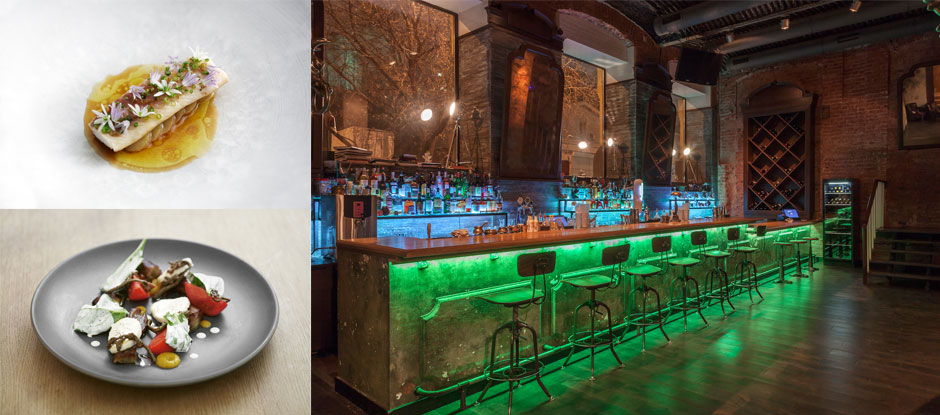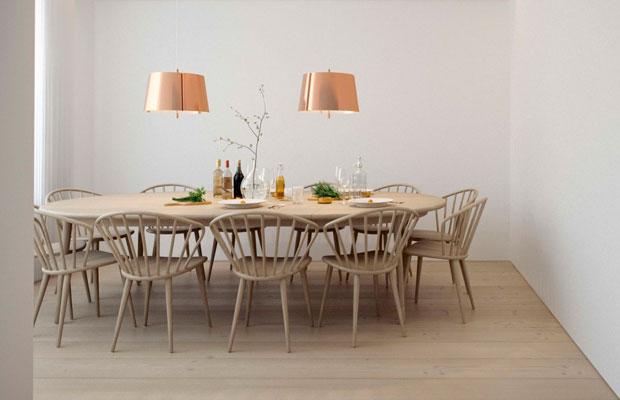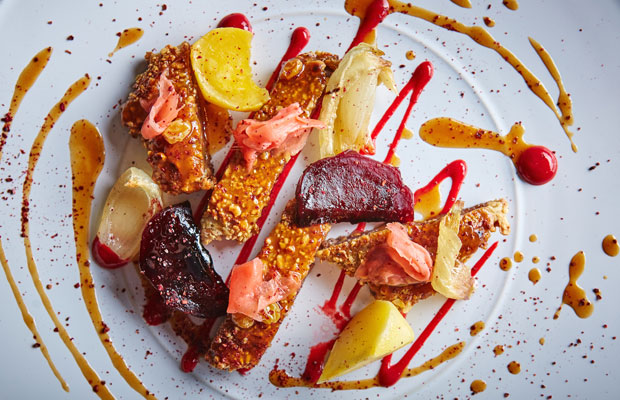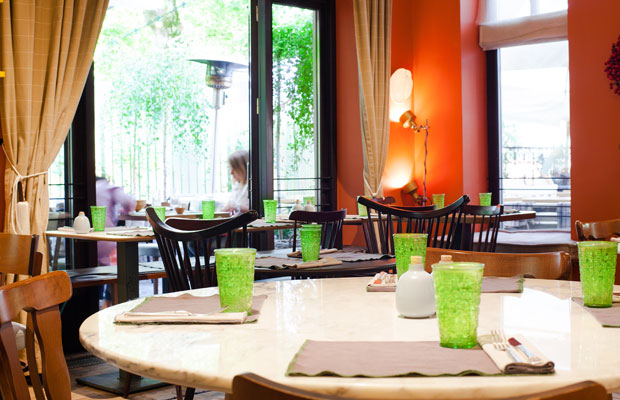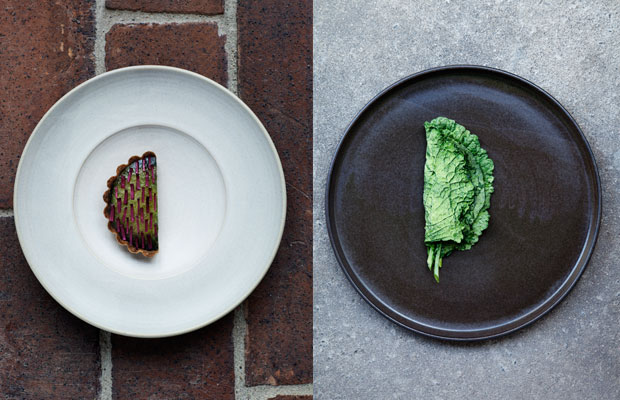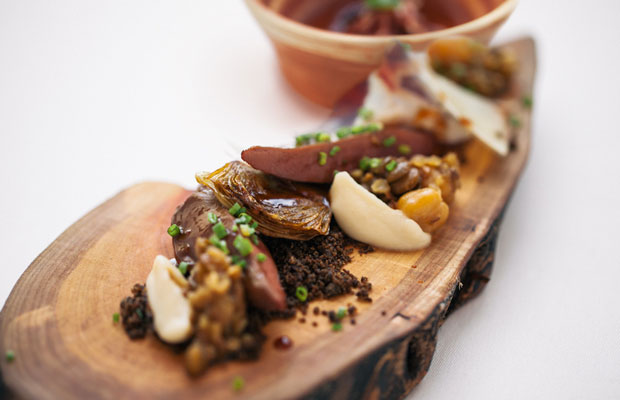Header images (clockwise from top left): perch with Swedish 'ansjovis' butter and potato from Gastrologik; a Twins salad; the long bar at Nikuda Ne Edem
With tables at Noma Sydney selling out in 90 seconds, it's clear the appetite for Scandinavian cuisine is as strong now as ever. But if you couldn't get tickets and you can't wait for Noma to return to Copenhagen in May, don't worry – we've sourced the next generation of restaurants in Scandinavia and North East Europe for you right here.
From candy beetroot at Spis in Helsinki to blackberry soup at Twins in Moscow, this month's Diners Club® 50 Best Discovery Series will satisfy all kinds of curious appetites. Which restaurant will you visit in 2016?
1. Spis – Helsinki, Finland
Kasarmikatu 26, 00130 Helsinki
+358 (0) 45 305 1211 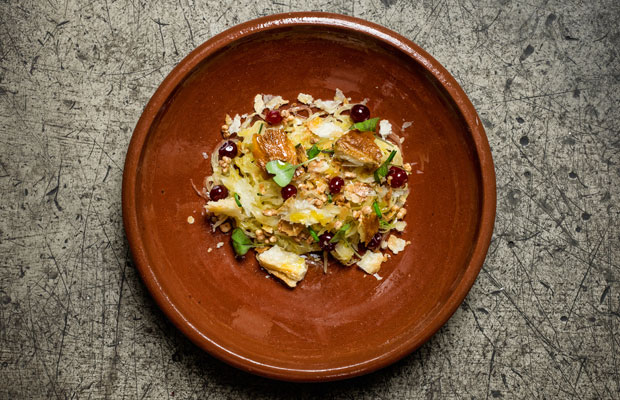
Spis cabbage pie and cranberries (image: Anton Sucksdorff)
What's the vibe? Spis is more hip coffee shop than fine dining. The simple wooden tables and chairs in the minuscule dining room are framed by rough brick walls covered in hacked back plaster and curling shreds of wallpaper.
Stand-out dishes: The four and six course menus are not vegetarian – there is always one meat and fish dish – but plants take centre stage. Kick off with a collection of vegetable bites, including celery root and candy beetroot, followed by a flaky cabbage pie studded with cranberries. Petit fours, including a malt brownie, are served on a huge Lego brick.
Discover more about Spis
2. Gastrologik – Stockholm, Sweden
Artillerigatan 14, 11451 Stockholm
+46 (0) 8-662 30 60
Simplicity at Gastrologik (image: Erik Olsson)
What makes it stand out: All the hallmarks of modern Scandinavian cooking are present and correct at Gastrologik, from foraged herbs and fermented fish to minimalist design and interesting wines. But at its heart the restaurant is most concerned with maximising flavour – a carrot is treated with just as much respect as a truffle.
On the menu: There is no menu – diners are served a procession of dishes dictated by the seasons. That could include reindeer blood crackers with vendace roe and sour cream, followed by fermented Swedish herring or wild duck breast with burnt celeriac and a dumpling made with the heart and thigh.
Discover more about Gastrologik
3. Nikuda Ne Edem – Moscow, Russia
Rochdelskaya St., 15-8, Moscow
+7 (495) 926 2322
Beef liver
How to get in: The 'secret' entrance is designed to look like a travel agency. When the woman behind the desk asks you where you are going, say the name of the restaurant (Nikuda Ne Edem means 'going nowhere') and a section of shelves slides back to reveal steps down to the restaurant.
What to order: Tuna with spicy sauce and rice is a kind of deconstructed sushi dish, while beef liver with breaded cashews and hazelnuts comes with baked beetroot sorbet, onion confit and blanched turnip. Orange ice cream with meringue and Earl Grey tea foam provides a fragrant end to the meal.
Discover more about Nikuda Ne Edem
4. Twins – Moscow, Russia
Malaya Bronnaya ulitsa, 13, Moscow
+7 495 695-45-10
A colourful interior at Twins
In a nutshell: A joint collaboration between identical twin chefs Ivan and Sergey Berezutskiy, this Moscow restaurant takes a modern approach to Russian cuisine with plenty of fraternal fun along the way. Sergey worked with Anatoly Komm at Varvary Restaurant in Moscow and at Grant Achatz's Alinea in the US, whilst Ivan's CV includes spells at El Bulli and El Celler de Can Roca in Spain.
Typical dishes: Russian ingredients are combined with modern technique in dishes such as venison and langoustines smoked in birch bark at the table or buckwheat porridge ice cream with whelk and porcini. Finish with a dessert of blackberry soup and ice cream.
Discover more about Twins
5. Kadeau – Copenhagen, Denmark
Wildersgade 10B, 1408, Copenhagen
+45 33 25 22 23
Caramelised buttermilk tarte (left); kale and cabbage from the garden with oysters, hemp and parsley (right) - images Marie Louise Munkegaard
Chief reason to visit: An early exponent of the New Nordic movement, chef Nicolai Nørregaard opened the original Kadeau on the tiny Baltic island of Bornholm in 2007. The Copenhagen restaurant takes its lead from the original, encapsulating the island's terroir in beautifully constructed seasonal dishes.
Typical dishes: Foraged ingredients from Bornholm, which are pickled, cured, fermented and smoked, are a feature of the 20-course tasting menu. Think oysters with hemp and parsley, wrapped in a kale leaf, or a pretty dish of fermented flower petals and preserved berries suspended in honey and flanked by nasturtium leaves.
Discover more about Kadeau
6. Senses – Warsaw, Poland
Bielańska 12, 00-085 Warsaw
+48 22 331 96 97
Pigeon, winter grains and pata negra
A little about the chef: Chef Andrea Camastra was born in Bari to a French-Italian family and has worked at high-end restaurants across Europe, including Le Chateaubriand in Paris. He is fascinated by food chemistry, devising recipes in his own culinary research lab, which is kitted out with the latest gastronomic gadgets.
On the menu: The signature tasting menu consists of three, seven or 10 courses, which draw inspiration from Polish cuisine and further afield. Pork and venison come from the restaurant's own farm in Poland, lobster from Portugal and sea urchins and truffles from Camastra's native Italy. Highlights include sweet scallop offset by the sharpness of sour cucumber and apple, while a delicate assembly of pigeon, grains and Iberico ham is winter on a plate.
Discover more about Senses
Follow @Senses_Rest
